Last weekend I’ve finally got to visit the most eminent, in every meaning, place in Amersfoort. Since I’d come to live here, my country has changed its president twice, one of them has divorced and the other has made quite a few equally destructive achievements, yet I failed to take my time to get to it.
In the brochure of Spoffin I found a discount coupon for climbing the tower for € 2.50 instead of € 4. The coupon was valid until August 31st, which conveniently fell on Saturday. This chance we couldn’t miss.

The Onze-Lieve-Vrouwetoren or “The Tower of Our Lady” was built in the 15th century and finishied around 1470. The exact date is unknown since the church archive was destroyed in 1579 during the Beeldenstorm—apparently the Protestants couldn’t distinguish documents from icons.
The tower is 98.33 metres tall, which makes it the third highest in Holland, preceded by the Domtoren in Utrecht (112 m) and the Nieuwe Kerk in Delft (109 m). And it’s quite fortunate as the Sint-Vituskerk (Hilversum) is only three centimetres shorter.
The tower may only be visited with a guided tour, which is spoken in Dutch of course.
Despite its quite massive exterior dimensions, a narrow spiral stairs of 346 steps is leading to its top. At the first “pit-stop” the guide asked the kids to show the point we were standing at in their opinion:

A view at the Lieve Vrouwekerkhof from the lower terrace of the tower, which is at about one third of its total height:
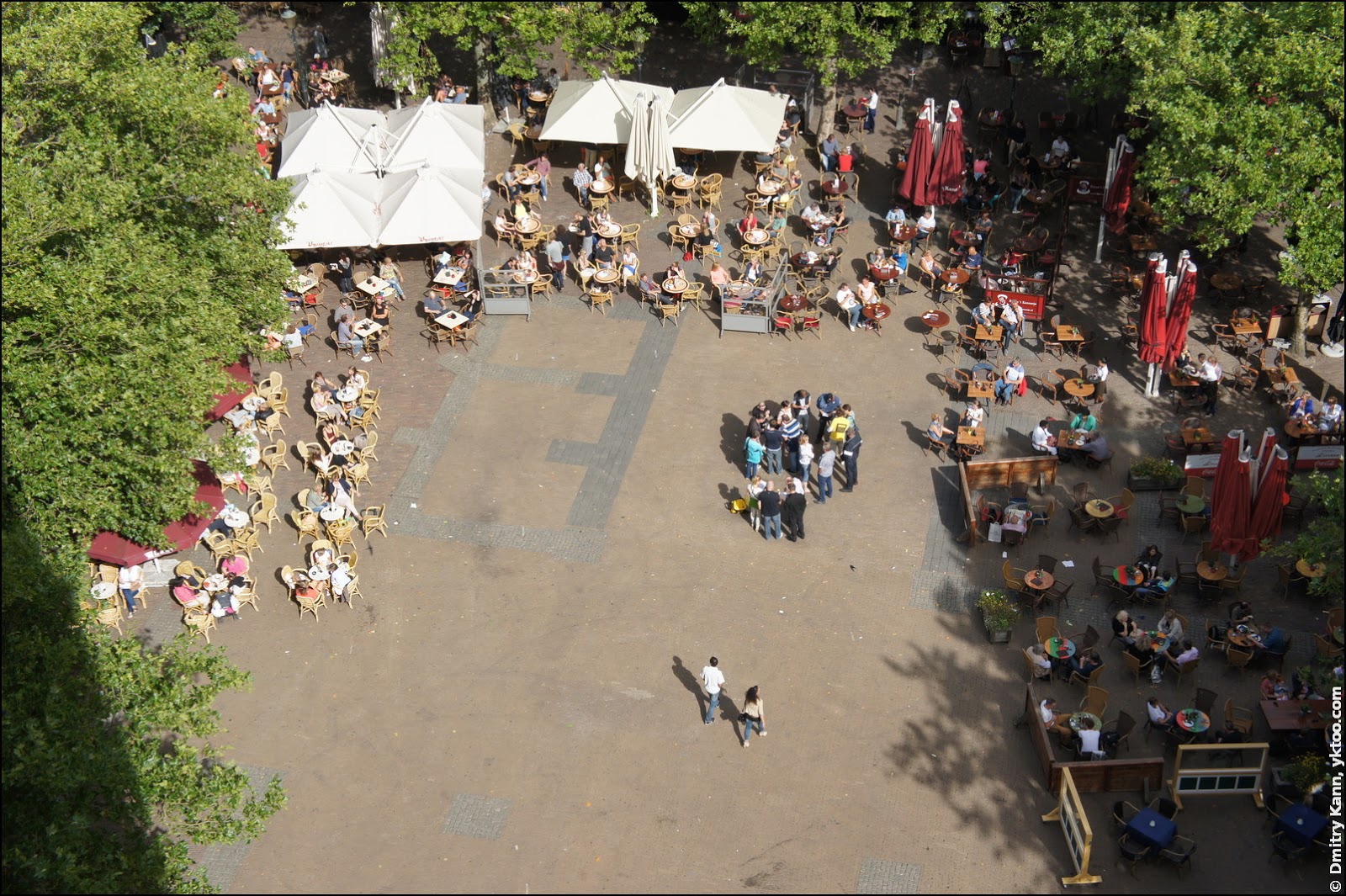
You can see the typical outside cafés and Amersfoorters enjoying the sun.
Street pattern in the old city hasn’t had any significant change in the past few centuries, according to our guide:

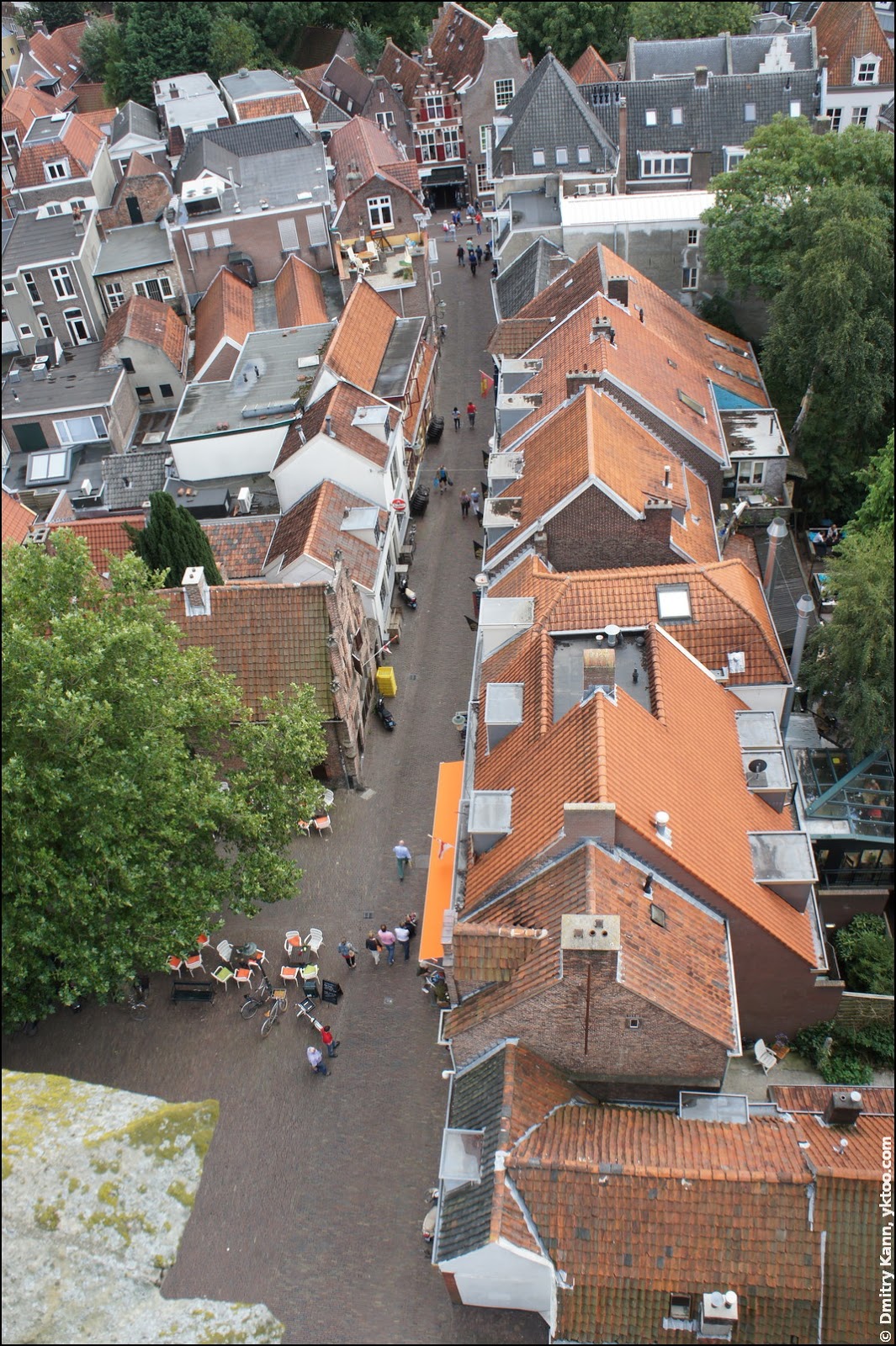
But the houses are rebuilt time to time, of course:
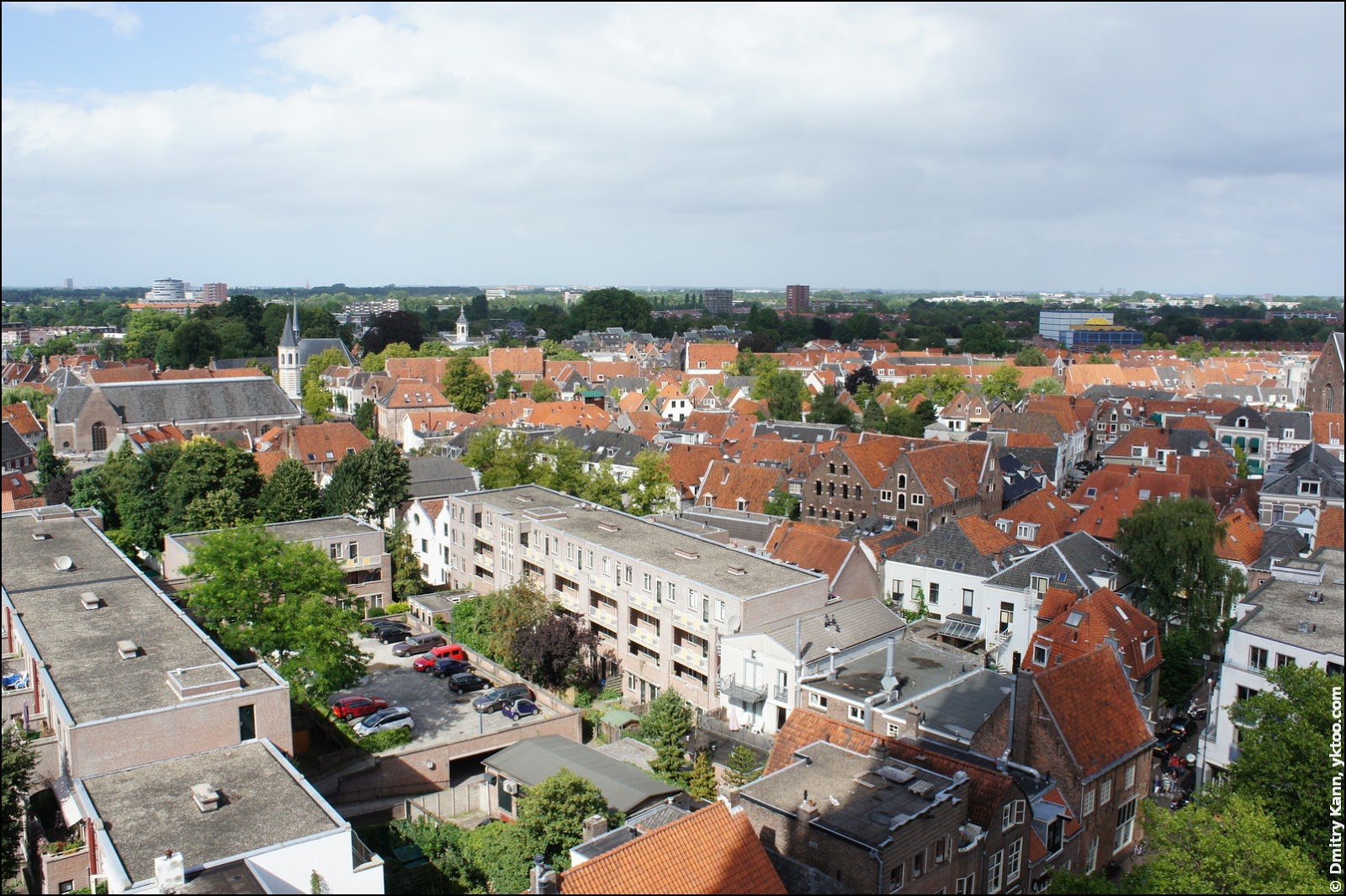
The outside of the center looks entirely differently:

You can see solar panels on many roofs—the “green” energy is in fashion nowadays. This is the city-hall, for example:
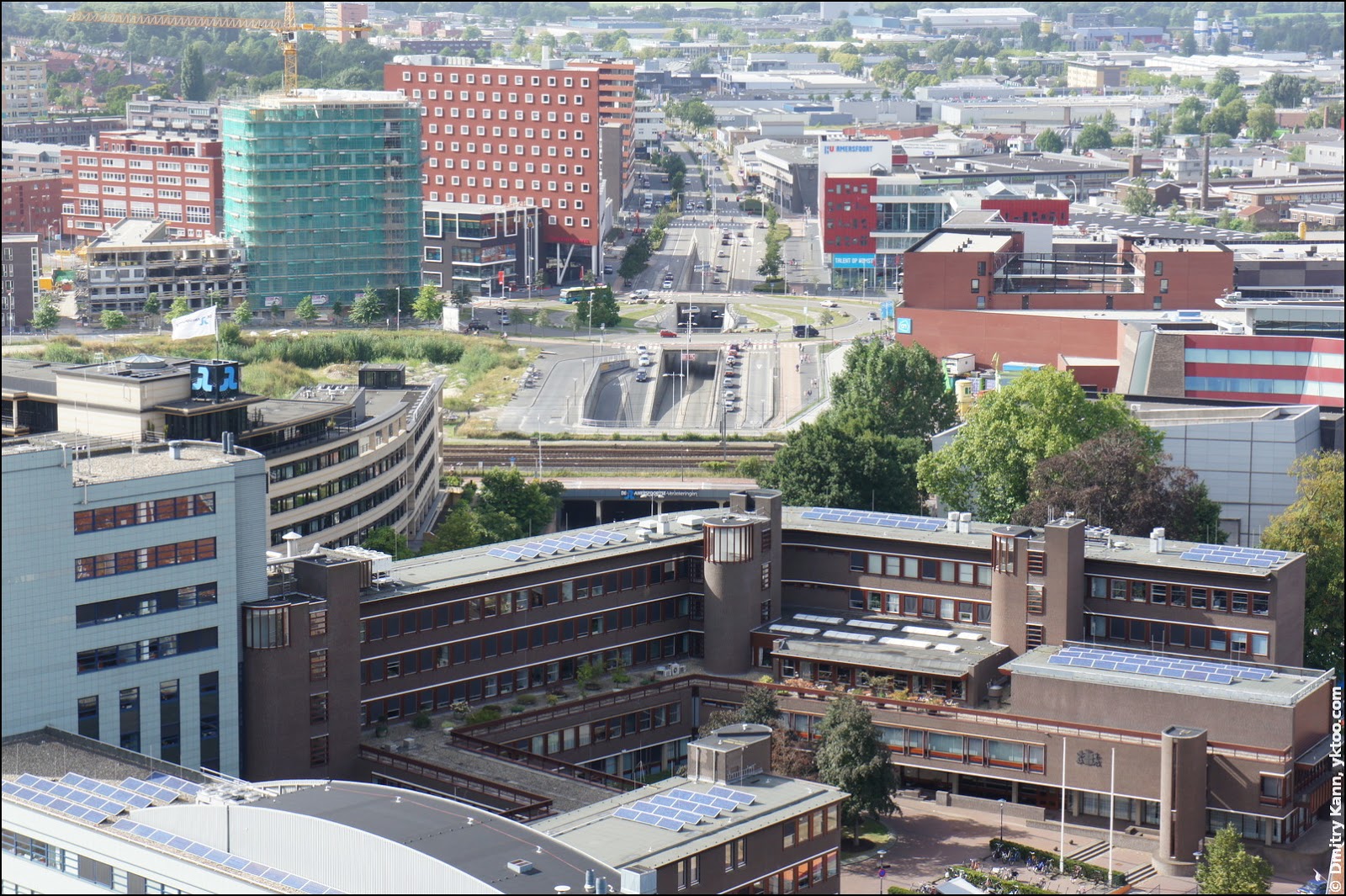
Renewable energy is actively backed and subsidised by the government. Many make use of it by renting out their rooftop areas:

Westsingel and the ubiquitous bikes:
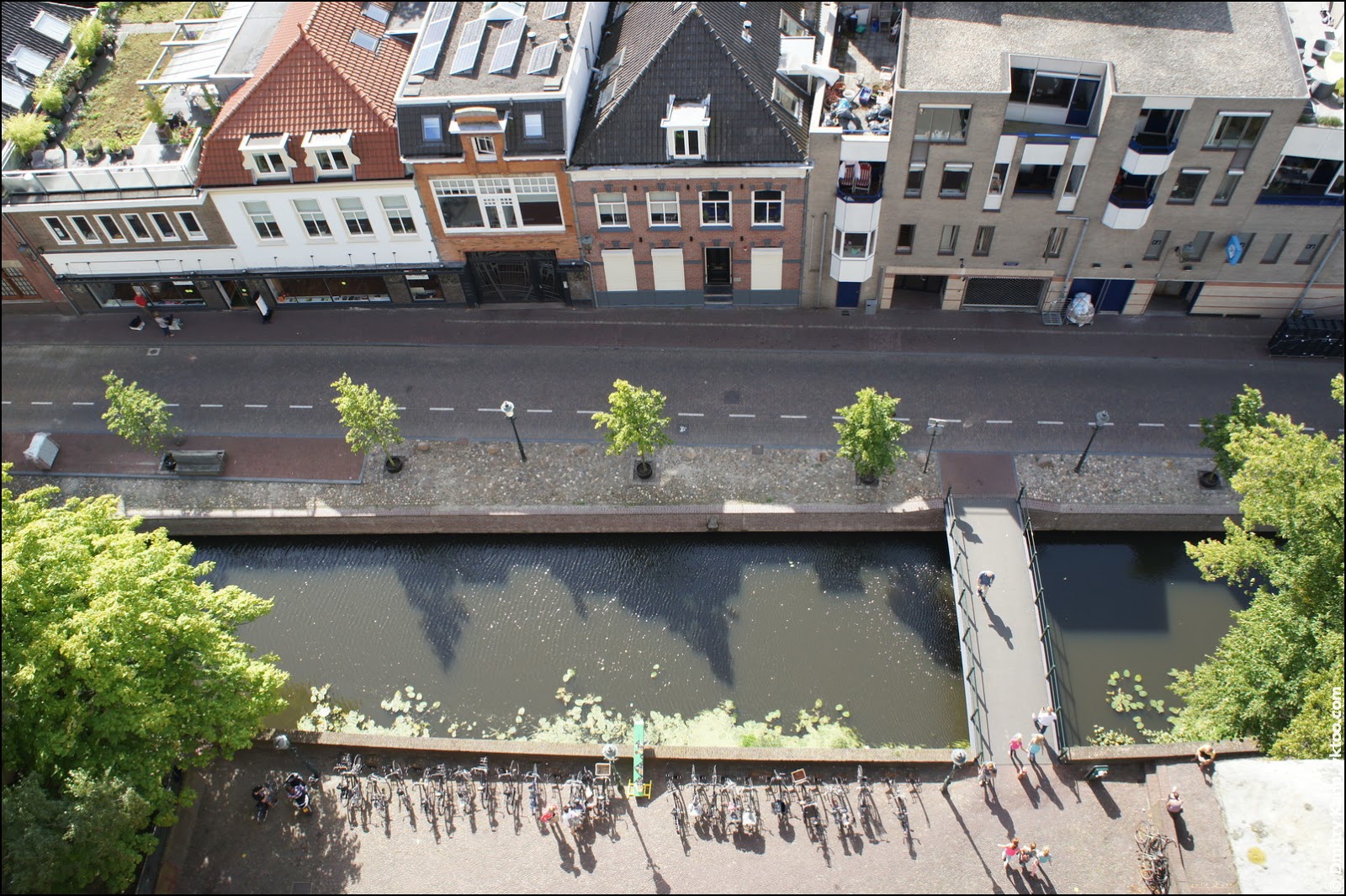
Another trend in this highly Internetised country is QR codes, some of them are some metres large:

Some people use their rooftops in a more traditional way:

We were lucky enough to have seen one of the few professional carilloneur of the country. He plays an instrument called carillon, which has a chromatic tuning like a piano, but its keys are in fact levers.

The levers are conneced by wires to bells’ clappers:
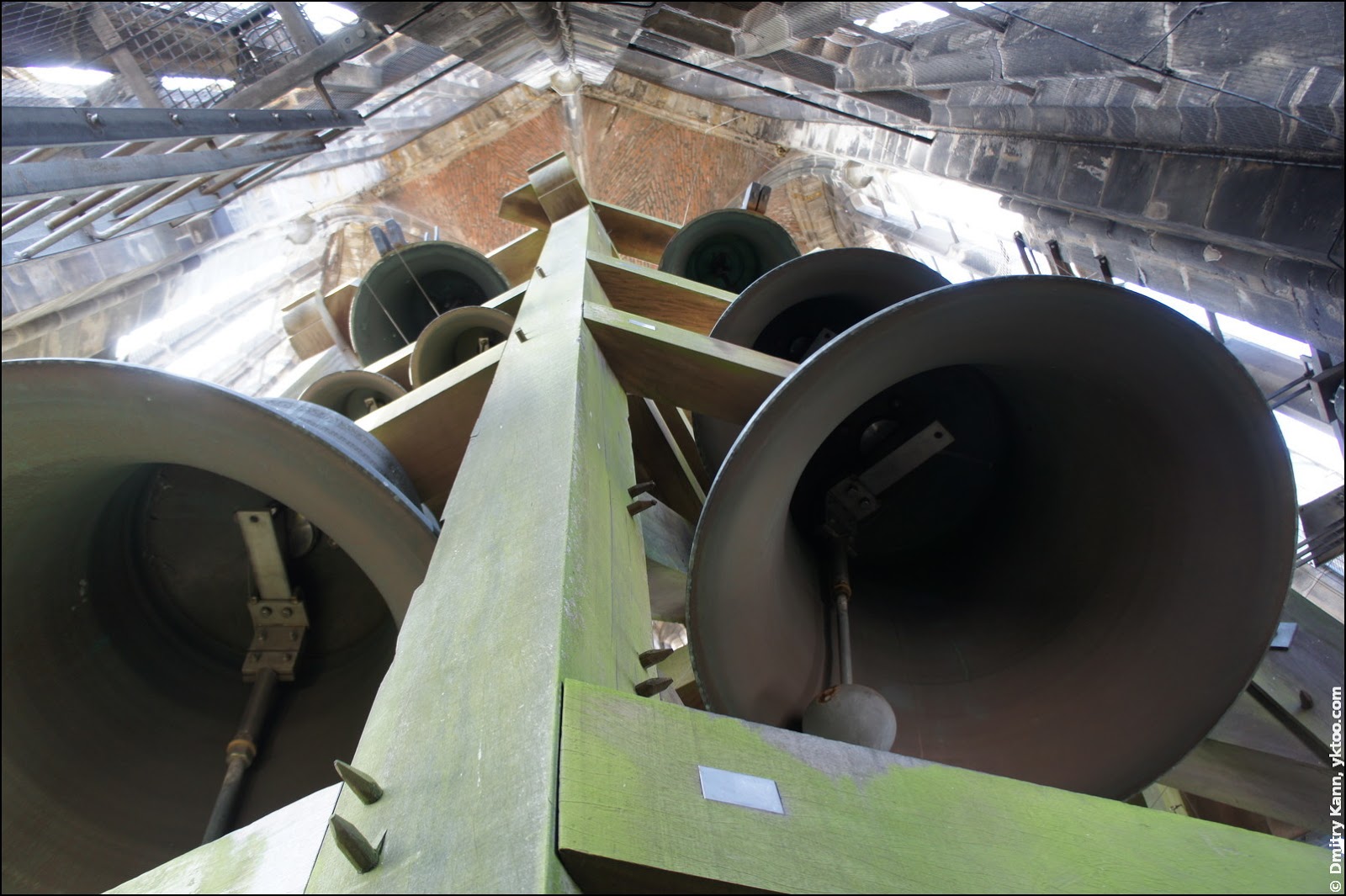
Amersfoort Tower of Our Lady is special in the sense it’s equipped with two carillons: a conventional one built in 1664, with 35 bells, and a modern one of 1997 with 58 bells. The tower also has seven regular bells, making the total of one hundred pieces.
The carilloneur (beiaardier), a passionate old man with a strong Belgian accent, played both instruments at our request. Which I filmed, of course.
The Hormonious Blacksmith by Handel, played on the young carillon:
And some unknown piece on the 17th century one:
After that we continued to climb the spiral stairs. The second level is some seventy metres above the ground.

From here one can see the paved outline of the former church, once siding with the tower:

In the eighteenth century the church was used in ungodly ways: as a storage place for ammunition and as laboratory for the manufacturing of shells. God couldn’t apparently put up with it as in 1787 an explosion in the laboratory killed seventeen people and badly damaged the building. The wreckage of the church was removed in 1806 for the sake of safety, and the paved contour is all what’s left.
The sun hid behind the clouds sometimes, casting odd shadows on the city:

Some more views from above:


All the streets, busy at the moment, will become empty at five, as soon as the shops close.

Another curious fact about the tower is that it used to be the middle point of the Dutch grid reference system (nulpunt Rijksdriehoeskmeting Kadaster) thanks to its central location and prominence. This is confirmed by the pointer ring installed in the tower’s floor:

But negative coordinate values caused mistakes to occur. Therefore the middle point was moved 155 km Westwards and 463 km Southwards in 1978. Thus the tower’s coordinates nowadays are X = 155 000, Y = 463 000. ■
 — world’s fastest URL shortener
— world’s fastest URL shortener
Comments